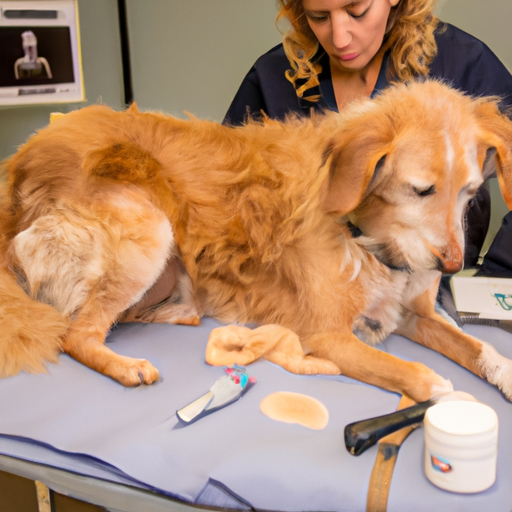Understanding Alopecia
Alopecia is a medical term for hair loss, and in dogs, it can occur for various reasons. As a caregiver, it’s essential that you understand this condition and what it can mean for your furry friend. Hair loss in dogs isn’t just about aesthetics—it can also signal underlying health problems or discomfort for your pet.
There are different types of alopecia:
- Alopecia X: This type is also known as black skin disease. It mostly affects Pomeranians and Keeshonds but can occur in any breed.
- Seasonal Flank Alopecia: This variant causes hair loss on the flanks and usually occurs during the colder months.
- Pattern Baldness: This form affects certain dog breeds more than others and is characterized by hair loss in specific areas.
Recognizing the Symptoms
Noticing the early signs of alopecia can be crucial for effective treatment. Look for these symptoms:
- Hair loss: This could be localized to certain areas or affect the entire body. The skin underneath might look normal, inflamed, or darkened.
- Changes in the skin: This can include redness, scaling, or bumps.
- Behavioral changes: Dogs might show signs of discomfort like excessive scratching or licking.
Diagnosis and Treatment
When you observe potential signs of alopecia, it’s important to consult your vet. They will conduct a thorough examination and might use the following tools to reach a diagnosis:
| Diagnostic Tool | Purpose |
|---|---|
| Skin scraping test | To check for mites |
| Fungal culture | To test for ringworm |
| Biopsy | To examine skin cells |
Depending on the underlying cause, the treatment could include:
- Medication: This might be topical or oral, depending on the cause.
- Light therapy: This can be useful for Seasonal Flank Alopecia.
- Diet: Certain dietary changes could help manage the condition.
Preventive Measures
Though not all cases of alopecia can be prevented, you can take steps to keep your pet’s skin and coat healthy:
- Regular grooming: This helps keep the skin clean and alert you to any changes.
- Balanced diet: A diet rich in essential fatty acids can promote a healthy coat.
- Regular vet visits: Regular check-ups can help detect any health issues early.
Coping with Alopecia
Alopecia can be a stressful condition for both the dog and the caregiver. Remember, your pet can still lead a happy life with the right care and support. Patience and understanding can go a long way in helping your pet cope with alopecia.
Frequently Asked Questions
Q: Can alopecia in dogs be cured?
A: This depends on the underlying cause. Some types of alopecia can be managed with treatment while others may not be curable.
Q: Is alopecia in dogs painful?
A: Alopecia itself is not usually painful, but the underlying cause might lead to discomfort or itching.
Q: Can I prevent my dog from getting alopecia?
A: While not all types of alopecia can be prevented, maintaining a healthy lifestyle can help keep your dog’s coat in good condition.



